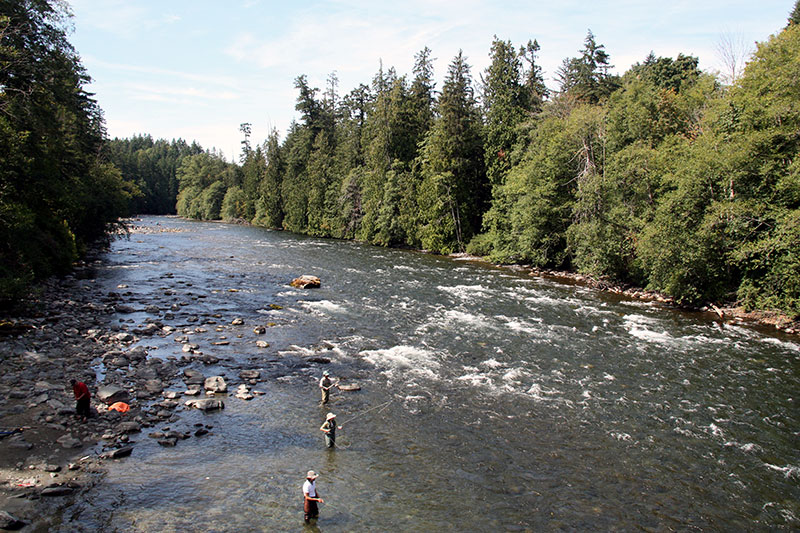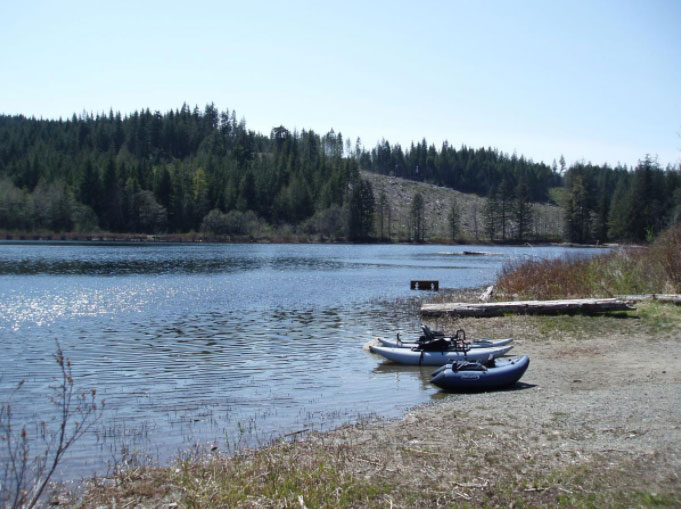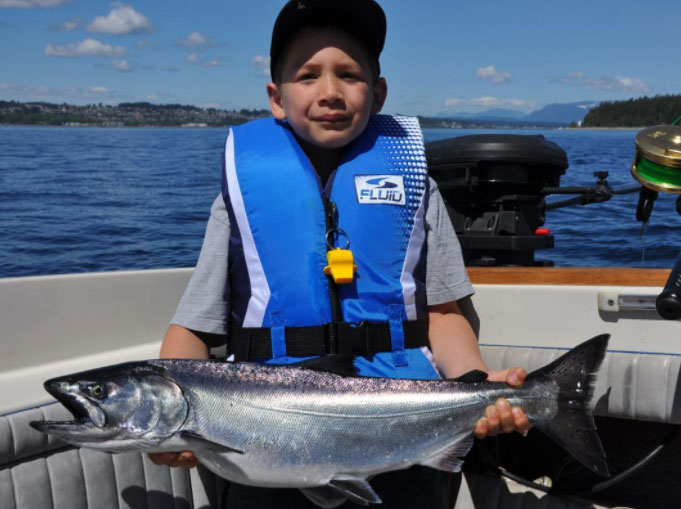
That Campbell River is recognized worldwide as the “Salmon Capital of the World” is common knowledge. It’s neither an idle boast nor Chamber of Commerce hyperbole; it’s simply a fact. Just as it’s a fact that some other West Coast destinations enjoy periods of plenty while migratory runs pass through their respective areas, and a few have admittedly larger fish on average. Nevertheless, none can match the easily accessible, year-round salmon fishing available at Campbell River, nor come remotely close when considering the historical significance this vibrant, cosmopolitan city has played in the field of recreational fishing.
As realtors love to expound, only three things count: location, location and location. Such is the case with Campbell River, for it’s located on the upper Strait of Georgia, a major year-round feeding ground for immature Chinooks (which can weigh up to 30 pounds). It’s also dead centre in the Inside Passage between Vancouver Island and the mainland. All five species of salmon migrating southward through the Inside Passage must swim though Johnstone Strait, which splits at Chatham Point—northeast into Nodales Channel and southward into Discovery Passage.
The latter have a fairly straight run of about 50 km to the south end of Quadra Island, but those on the eastern route have a maze of islands, channels and passages before them. Some head for Bute Inlet and others to Toba Inlet, but most continue southward until eventually joining the Discovery Passage fish at the lower end of Quadra Island for a final binge of feeding prior to continuing onward. And all of this takes place within easy running distance of Campbell River. In addition to being on the southward migration route for all five species of Pacific salmon, the Quinsam River Hatchery adds greatly to annual returns of Chinook, coho, pink and chum salmon.
While the term “tyee”—a Chinook weighing a minimum of 30 pounds—is used generically up and down the coast, there is only one Tyee Club of British Columbia in the world, and it has been located at the Campbell River’s mouth since 1924. It’s the world’s most exclusive fishing club, for membership can be earned only by catching a tyee within a specific area, using specific tackle, during a specific time frame. The official tyee season begins on July 15 and ends Setp. 15, unless otherwise altered by the club itself or by DFO.

Campbell River offers accommodations that include rustic BC Forest Service campgrounds near the outskirts, fully serviced RV parks, bed-and-breakfast operations, a range of motels and hotels, and several fishing resorts. Most have fishing packages, or can make arrangements for visitors to fish with the area’s skilled, well-equipped guides. Visiting anglers who bring their own boats will find launching ramps are available. Many arrange for moorage at a marina for the duration of their stay.
During spring, summer and fall, anglers can be seen casting from various beaches and breakwaters with light tackle and fly rods. Early in the season they are seeking sea-run cutthroat trout, but starting around July they switch to pink salmon that are returning to the Campbell/Quinsam system. Shortly afterward, coho join the mix, which keeps everyone busy until well into fall. In the meantime, late-season anglers are still battling those tackle-punishing chum salmon until November.
Yes, Campbell River definitely deserves its title of Salmon Capital of the World.![]()

A full listing of all accommodations and marinas can be obtained from:
Visitor Info Centre
1235 Shoppers Row
(877) 286-5705
www.campbellriver.travel
Visit the Store
$34.99
$34.99
Featured Catch

Joel Unickow halibut (Photo: Rob Frawley Lucky Strike Sportfishing Tofino)







